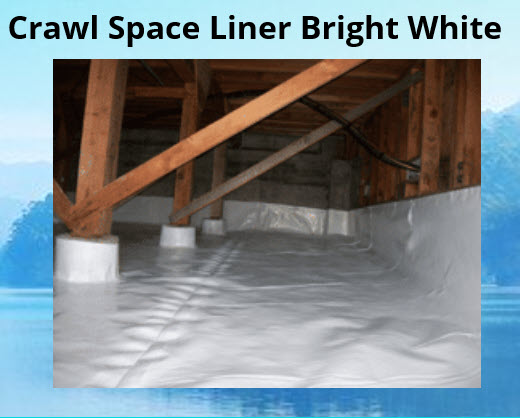The Ultimate Vapor and Moisture Barrier: Reinforced Polyethylene Sheeting

When it comes to protecting your construction projects from moisture and vapor, choosing the right barrier is crucial. Reinforced polyethylene sheeting stands out as the ultimate solution compared to traditional 6 mil plastic sheeting. Here’s why:
Reinforced polyethylene sheeting offers Enhanced Strength and Durability
1. Superior Strength
- Reinforcement Matters: Reinforced polyethylene sheeting, often reinforced with string or fabric, offers significantly higher tensile strength compared to standard 6 mil plastic sheeting. This reinforcement prevents tears and punctures, ensuring the barrier remains intact and effective over time.
- Longer Lifespan: The additional strength translates to a longer lifespan, reducing the need for frequent replacements and providing a more reliable long-term solution.
2. Increased Puncture Resistance
- Heavy-Duty Performance: In environments where sharp objects, heavy machinery, or constant foot traffic are present, reinforced polyethylene sheeting withstands punctures better than 6 mil plastic sheeting, maintaining its integrity and protective qualities.
Reinforced polyethylene sheeting Delivers Superior Moisture and Vapor Control
3. Effective Moisture Barrier
- Complete Protection: Reinforced polyethylene sheeting excels at blocking moisture, preventing it from seeping into your building structures. This is particularly important in areas prone to high humidity or water exposure, ensuring that your construction remains dry and protected.
- Reliable Performance: Unlike 6 mil plastic sheeting, which can degrade and become less effective over time, reinforced polyethylene sheeting provides consistent performance, keeping moisture at bay year after year.
4. Versatile Application
- Wide Range of Uses: Reinforced polyethylene sheeting can be used under concrete slabs, in crawl spaces, and in walls to create an effective moisture barrier. Its flexibility and strength make it suitable for a variety of construction applications.
- Adaptability: This sheeting adapts to different surfaces and conditions, ensuring comprehensive coverage and protection in any environment.
Why Choose Reinforced Polyethylene Sheeting Over 6 Mil Plastic Sheeting?
5. Longevity and Cost-Effectiveness
- Durable Investment: While 6 mil plastic sheeting might be a more affordable initial option, its lack of durability often leads to frequent replacements and repairs. Reinforced polyethylene sheeting, with its superior strength and longevity, proves to be a more cost-effective investment in the long run.
6. Improved Environmental Impact
- Less Waste: The durability and long lifespan of reinforced polyethylene sheeting mean fewer replacements, leading to less waste and a lower environmental footprint compared to the frequent disposal of degraded 6 mil plastic sheeting.
7. Enhanced Safety
- Reduced Risk of Failure: The increased puncture and tear resistance of reinforced polyethylene sheeting significantly reduces the risk of barrier failure, providing peace of mind that your construction projects are well-protected against moisture-related issues.
Ensure your construction projects are protected with the best materials. Contact us today to learn more about our reinforced polyethylene sheeting and how it can enhance your moisture and vapor barrier needs.



